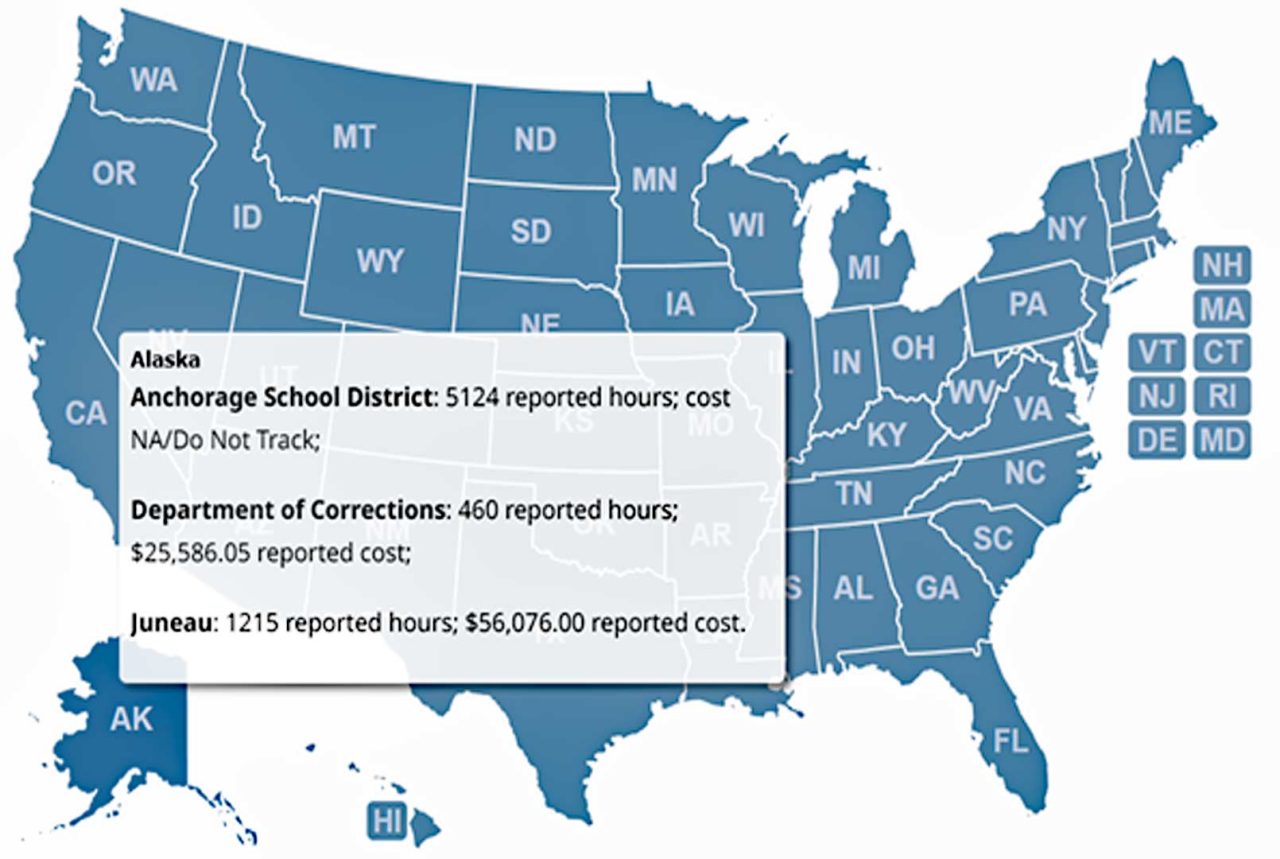
By Sarah Montalbano – Alaska Policy Forum

Should public school teachers be paid not to teach? School districts and other government bodies often pay employees full wages and benefits for performing union work instead of their official duties. Examples abound from states such as New Jersey, Pennsylvania, and Kentucky. “Release time” pays teachers not to teach and instead spend time and taxpayer money working for the teacher’s union. Most governments do not track how much release time costs taxpayers, although jurisdictions often exempt thousands of hours per year.
The Goldwater Institute tracked release time for three government agencies in each state for fiscal year 2019. For Alaska, the Department of Corrections, the City of Juneau, and the Anchorage School District (ASD) were selected for analysis. The Department of Corrections reported 460 hours at the cost of $25,586 in pay and benefits, while the City of Juneau reported 1,215 hours at the cost of $56,076 in pay and benefits.
The Anchorage School District (ASD) reported 5,124 hours of release time but did not track the cost of those hours. Education in Alaska is funded mostly through state revenues and local revenues; state revenues are predominantly financed through taxes and investment earnings from resource development, while local revenues are often derived from property taxes. Although most school districts around the country that the Goldwater Institute selected for analysis do not track release time hours or did not respond to the request for data, ASD reported the second-highest release time hours of those districts that did respond. The only district that exceeded ASD, Denver Public Schools in Colorado, reported 8,479 hours at a cost of $317,165, or almost 50% more hours than ASD.

What do ASD collective bargaining agreements say about release time? Frighteningly little, given that the school district pays full salary and benefits for release hours — not the unions. ASD’s agreement, in effect from July 2021 to June 2024, with the Anchorage Council of Education/American Federation of Teachers Local 4425 states that, for meetings occurring between ACE and the district at least once a month, “Release time shall be provided to an ACE representative, in addition to the President, to attend these meetings.”
Section 303J also gives ACE the option to purchase an additional 30 days of release time for a member to use for ACE activities at the employee’s current “per diem” (per day) rate. Notably, Section 303I also states, “A maximum of seventy-five (75) days per fiscal year shall be allocated for employees to participate in ACE activities,” with the union providing 10 workdays of notice to labor relations.
ASD’s agreement with the Anchorage Education Association gives special education members “release time to administer alternate assessment tests” and three days per quarter for “meetings, testing and evaluation, data collection, paperwork, collaboration, child find duties, and consultation.” The previous bargaining agreement allocated two days per quarter.
The Anchorage Principals’ Association agreement with ASD in Section 203C states that “The District will provide leave for Association members on an as-needed and not-to-interfere basis for legitimate representation activities…” The TOTEM Association of Educational Support Personnel agreement also provides paid leave for up to six employees to engage in negotiations with the district.
Similarly, the agreement with the Food Service Bargaining Unit, General Teamsters Local 959, allows up to seven shop stewards to “handle requests, complaints, and grievances…during working hours” and “suffer no loss of compensation for a reasonable amount of time spent in pursuit of these duties.” The agreement with the Warehouse and Maintenance Employees of the Teamsters Local 959 has a similar clause (5.02) but specifies that “the District is not expected to subsidize meetings of groups of stewards except on occasion.”
A case was brought to the New Jersey Supreme Court by the Goldwater Institute, arguing that the Jersey City Board of Education and its teachers’ union violated state law by paying the salaries of two full-time teachers to work exclusively for the union. Because the New Jersey Constitution prohibits giving public resources to private parties (as do twenty-nine other states, including Alaska), the legislature must authorize release time before a school board can include it in a contract, which did not occur in this case.
The case was decided February 3, 2021, by the Supreme Court of New Jersey. Unfortunately, the Court decided that the release time provisions in the bargaining agreements did not constitute a gift to the union under the “gift clause” of the New Jersey Constitution because the full-time work of the releasees contributed to the public interest by resolving labor disputes early in coordination with the district. The precedent set in this case could inform similar constitutional challenges in other states, although there is no documentation of teachers working full-time for the union in ASD or that release time was not authorized in ASD’s collective bargaining agreements.
Hopefully, the Anchorage School District can reduce the hours employees spend in release time – and start accounting for how much money the district is actually paying teachers to work for their unions.
The views expressed here are those of the author.









6 Comments
Winter is coming more covid stupidness
Mask wearing, get your shot and stay home, school is closed. Free pay to work from home.
Teachers are no longer a respected class. All teachers are now, whether by choice or not, Democrats doing the democrats bidding.
The DOC, nor any other State department has an employer-paidl union release time scheme. With an authorization like a dues checkoff authorization, employees donate a day of their paid leave to a union business leave bank, which the union can draw on to provide pay for employees conducting union business. The pay appears as regular state pay. I tried to track usage with little success and I don’t know how much of my effort survived my retirement.
Release time for special Ed has nothing to do with Union activity. There isn’t enough hours in the day for them to do everything required of them. This release time helps them have time for testing and paperwork (which is very extensive)
Ms Petersen says it correctly. Release Time is a payroll category that covers a lot of ground, most of it directly related to ASD business and not anything about bargaining unit business. Bargaining units do bargain for some, but the balance is that bargaining units do a lot that would require more HR staff if they didn’t exist.
I would hope Ms Montalbano would name her sources. Otherwise, this would appear to be a lot of wrong conclusions with no real research.
I was a special ed teacher, and remember another special ed teacher in my school who got a substitute when going off on union duties. There was nothing unusual about teachers taking off due to union duties, but we all assumed the union paid for it. Glad Montalbano brought that up to our attention even if it’s after all these past years.